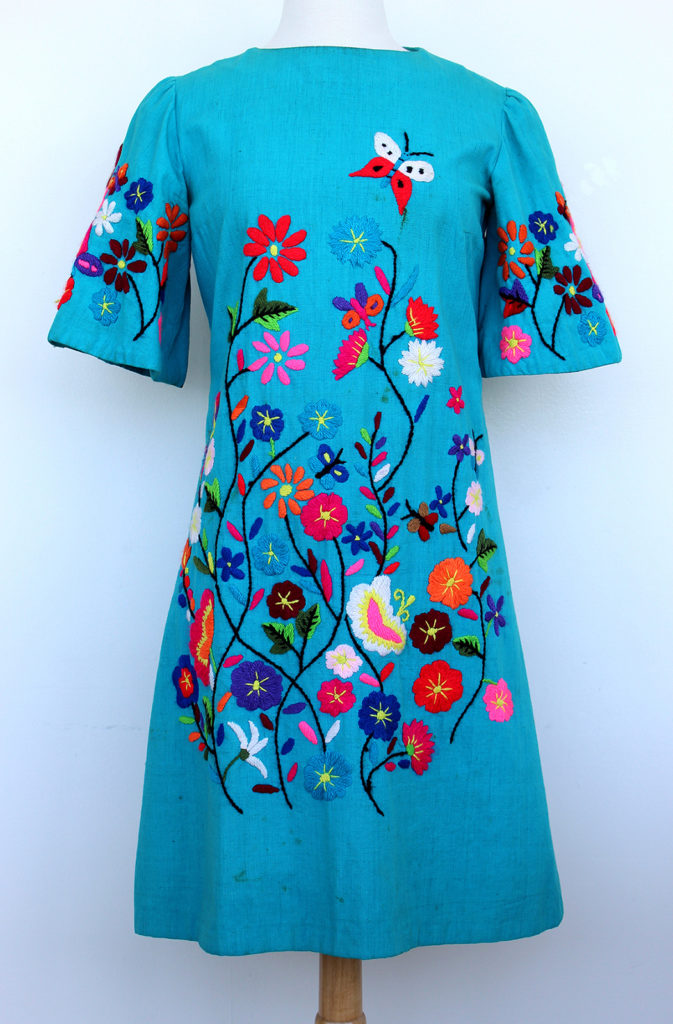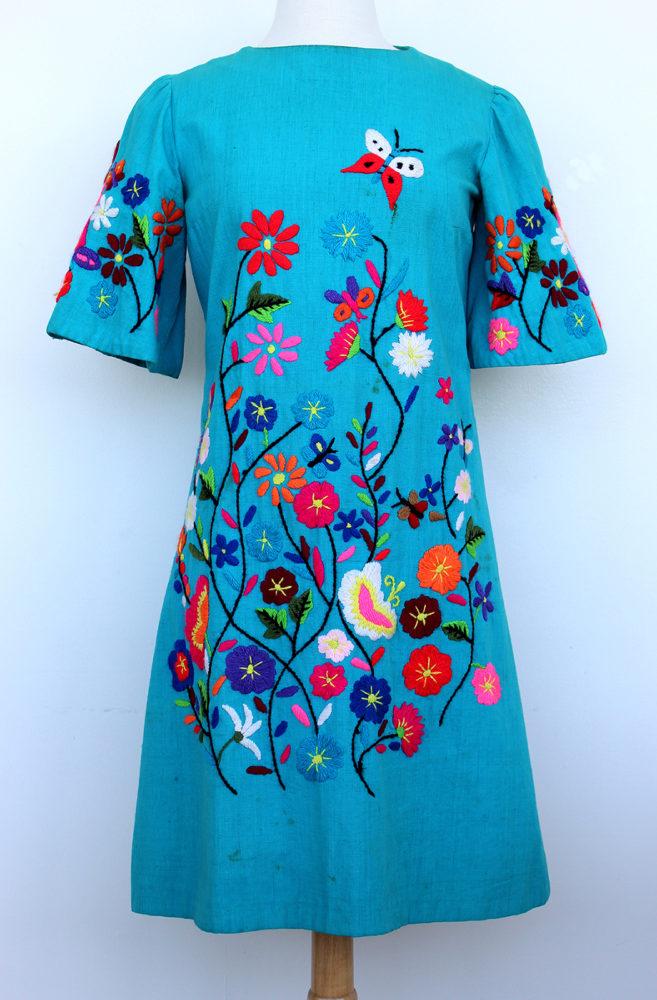A 1960’s kaleidoscopic dress full of inspiration

For the final Piece of the Week, I wanted to highlight a piece that contrasted the bleakness surrounding us outdoors. What better way to do that by selecting a dress from the 1960s, an era that introduced Americans to a plethora of shades inspired by psychedelia and began their journey along the bright color spectrum that turned into the 1970s.
The piece was created and worn by Mary Gokey (known to many as Mimi) during the 1960s. The overall color of the sheath dress is blue, yet it is filled with an array of colors within its embroidery. The dress acts like a tapestry, representing an interaction between butterflies in a colorful garden. This embroidery is laid out on the front of the dress and circles the sleeve, thereby giving the audience of the dress a 360 view of the picture.
The 1960s in America was one of those booming decades in which women and men could express themselves through clothing. Clothing began to portray different historical eras within the seams of outfits. If one looks at popular clothing worn by the likes of Jimi Hendrix or Mick Jagger, their Parisian-inspired military jackets boldly express the interconnectedness of fashion and history.
The influences in the 1960s were primarily Jackeline Kennedy, the infamous suit and pillbox hat turned into a trend worn by women everywhere. When thinking about the Bohemian movement, a picture of Janis Joplin should immediately pop in your head; along with the fashion from “across the pond,” and in the United Kingdom, Twiggy and the chic Mod style should come to mind.
Overall, the 1960s lay claim to the decade that shortened the length of the dress for women. Dresses were made for women with more accessible pockets and brought colors to life. The era was a way for women to use clothing as a means to express themselves no matter their location in the country, even if they were located in the Midwest.
Mary Gokey was the daughter of William Langer, a prominent governor then-senator of North Dakota during the 1930s-40s. She was in third grade when her father was elected governor and moved into the governor’s mansion in Bismarck. During their time there, she was exposed to politics and remembers having been visited by celebrities such as pilot Amelia Earhart.
During her high school years, her father was voted senator and moved the family to Washington where she enrolled in private school. She continued her education at George Washington University, where she met Margaret Truman, a good friend and sorority sister. She dropped out of university when she met Franklyn Gokey. They lived a happy life, traveling around the country with their kids, moving from Jupiter, Florida, back to Fargo, North Dakota. She was a woman whose family was politically involved and well-known, thereby her family had high expectations for her and made sure to have her uphold a good public image.
Mimi was a woman of her day, she was a philanthropic stay at home mother who loved her kids, her grandchildren and her husband.
Mimi’s ability to produce this garment highlights the accessibility women had to styles across the country.
Everyone takes part in fashion. For some, fashion is nothing more than a second skin they use to protect themselves from the environment. For others, it is a way of expressing themselves, their mood, their creativity, and their dreams.
This has been Ellimay reporting for the Spectrum, signing off for the semester. Thank you for those who have taken the time to read the Piece of the Week. if you haven’t yet, head over to the Spectrum online to read the articles. I hope everyone has a magical, safe and adventurous winter break.
